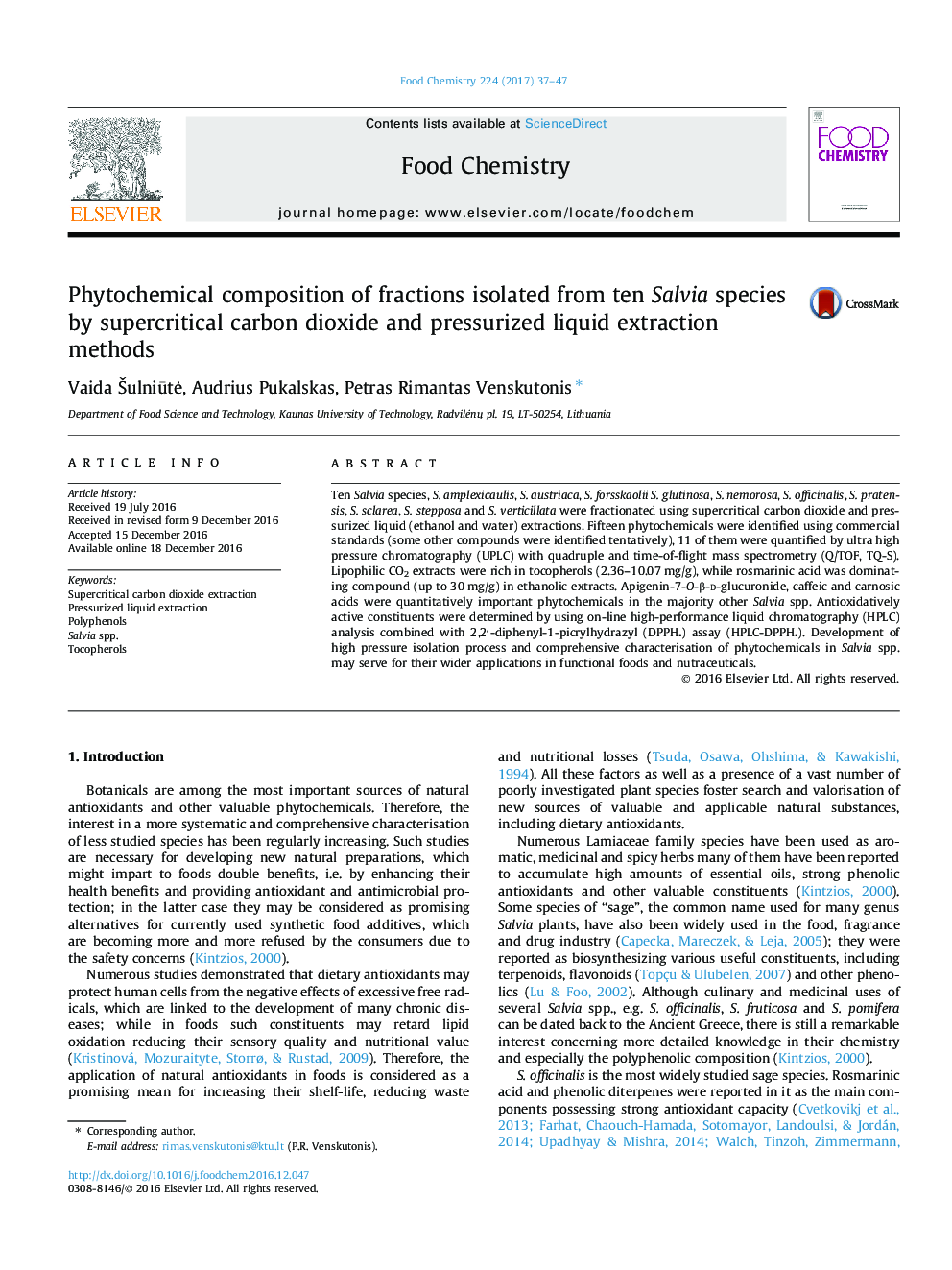| Article ID | Journal | Published Year | Pages | File Type |
|---|---|---|---|---|
| 5133542 | Food Chemistry | 2017 | 11 Pages |
â¢Salvia spp. were extracted with supercritical carbon dioxide and pressurized liquids.â¢Phytochemicals were identified (24) and quantified (11) in extracts by UPLC/MS/MS.â¢Lipophilic CO2 extracts of sage species were rich in tocopherols.â¢Rosmarinic acid was dominating compound in ethanolic extracts.â¢Apigenin glucuronide, caffeic and carnosic acids were other important compounds.
Ten Salvia species, S. amplexicaulis, S. austriaca, S. forsskaolii S. glutinosa, S. nemorosa, S. officinalis, S. pratensis, S. sclarea, S. stepposa and S. verticillata were fractionated using supercritical carbon dioxide and pressurized liquid (ethanol and water) extractions. Fifteen phytochemicals were identified using commercial standards (some other compounds were identified tentatively), 11 of them were quantified by ultra high pressure chromatography (UPLC) with quadruple and time-of-flight mass spectrometry (Q/TOF, TQ-S). Lipophilic CO2 extracts were rich in tocopherols (2.36-10.07 mg/g), while rosmarinic acid was dominating compound (up to 30 mg/g) in ethanolic extracts. Apigenin-7-O-β-d-glucuronide, caffeic and carnosic acids were quantitatively important phytochemicals in the majority other Salvia spp. Antioxidatively active constituents were determined by using on-line high-performance liquid chromatography (HPLC) analysis combined with 2,2â²-diphenyl-1-picrylhydrazyl (DPPH) assay (HPLC-DPPH). Development of high pressure isolation process and comprehensive characterisation of phytochemicals in Salvia spp. may serve for their wider applications in functional foods and nutraceuticals.
